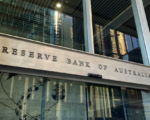Global central banks are entering a new phase, shifting from historically high interest rates towards easing monetary policy as inflation shows signs of cooling. The U.S. Federal Reserve, European Central Bank (ECB), Bank of England (BoE), and other major institutions are preparing to cut rates this fall, signaling an end to an era of elevated borrowing costs.
As markets anticipate multiple rate cuts by the Fed before year-end, analysts see central banks across Europe and beyond adopting similar moves, even as they grapple with sticky inflation in the services sector. For example, data suggest the ECB and BoE could each implement at least three 25 basis point cuts over the coming months.
For investors, this lower-rate environment points to potential stock market volatility and sector rotation, especially in tech, AI, and other high-growth industries. The U.S. labor market remains a focal point, with upcoming jobs reports key to shaping the Fed’s trajectory. The risk of a U.S. soft landing remains high, with investors eyeing inflation trends and potential shocks like U.S. tariff changes if political dynamics shift.
In currency markets, inflation and rate expectations will continue to drive moves, particularly for the euro and U.S. dollar. While global rate cuts may support growth in equities, particularly through 2025, economic data and geopolitical events will influence both volatility and market positioning.
Investors are watching closely as central banks navigate this delicate balance between rate cuts and inflationary pressures while gauging the implications for long-term growth.


















